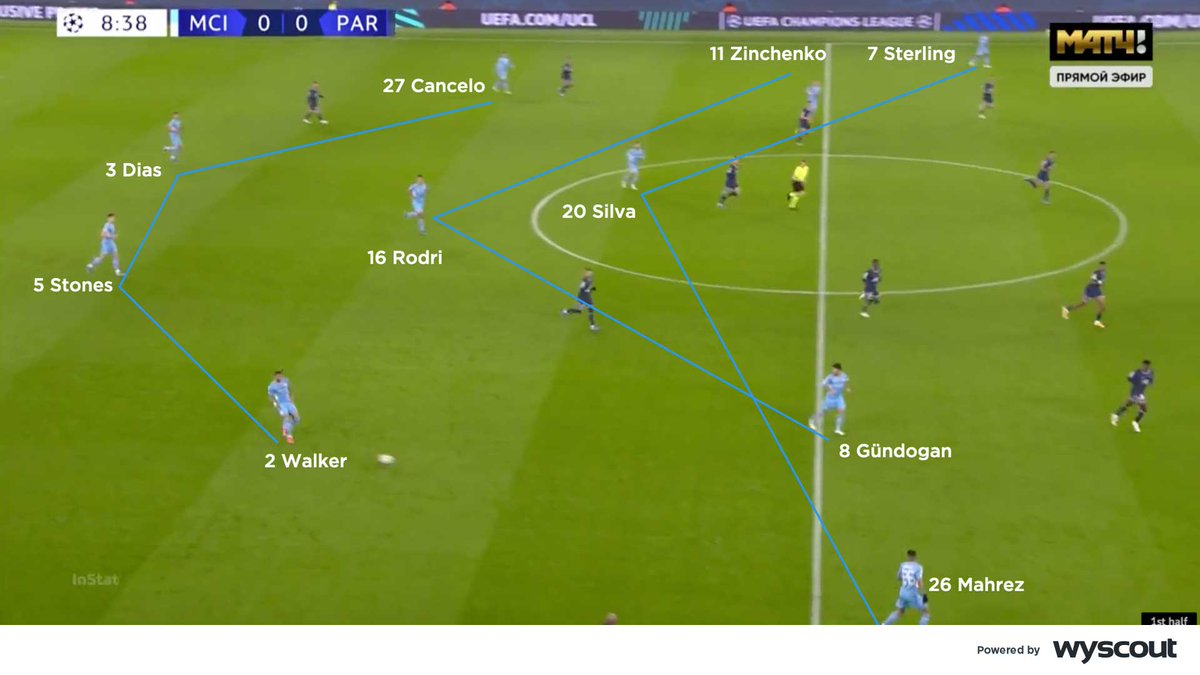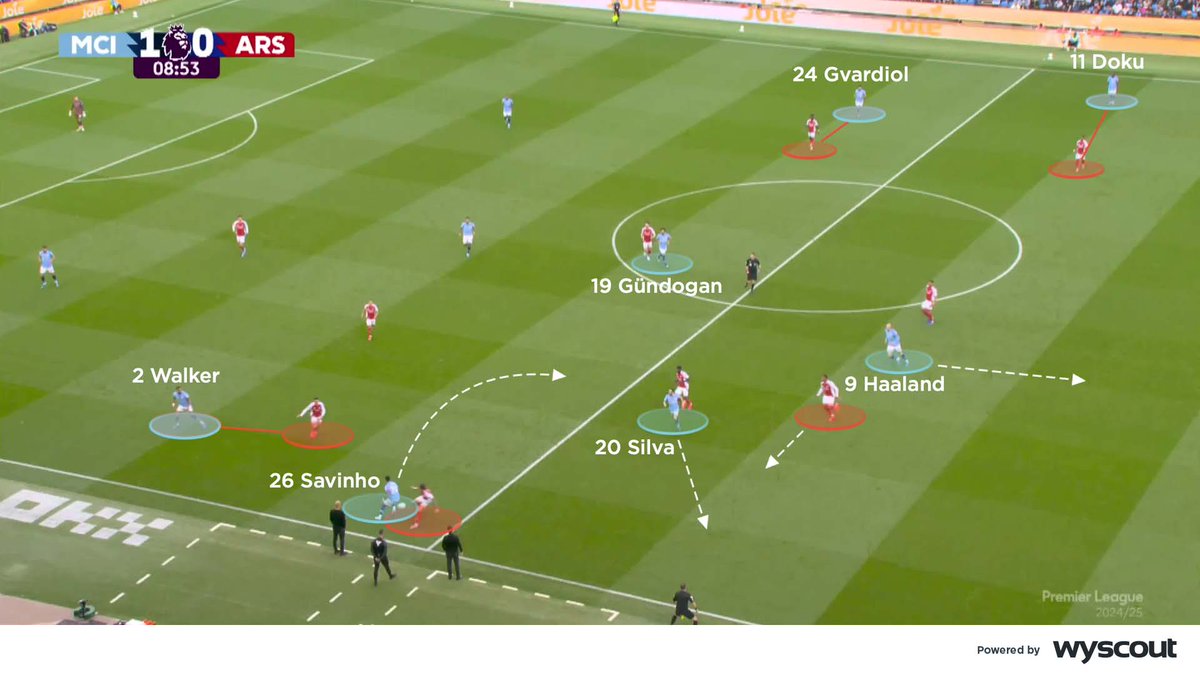Fresh analysis thread 🙌
How the Manchester City high press and #PSG forwards’ lack of effort was key to the home team winning and securing top spot in Group A... 🧐🧵
🔋 @Wyscout
#MCFC • #MCIPSG
How the Manchester City high press and #PSG forwards’ lack of effort was key to the home team winning and securing top spot in Group A... 🧐🧵
🔋 @Wyscout
#MCFC • #MCIPSG
City's 4-3-3 was designed to create central overloads, with false 9 Silva dropping deep and Sterling and Mahrez maintaining their width. Walker and Cancelo could then go forward to create 2v1s out wide in the knowledge that PSG’s wide forwards, were unlikely to track back... 🧐🧵 

City implemented a high and aggressive press. The idea to show PSG inside was most likely to reduce the chances of them getting Mbappé or Neymar into one-on-one races in the channels in behind the City defence... 🧐🧵 

City were able to dominate the game through exploiting the wide areas. They did this through diagonal switches of play after drawing PSG out to one side. Once again, this was made possible due to the low-intensity out-of-possession work from PSG’s front three... 🧐🧵 

City were able to exploit the wide areas through simple overloads. Due to the lack of recovery runs from PSG's front three, any overlapping runs from the City full-backs had to be tracked by Gueye or Herrera. This would then free up a City midfielder to recycle the play... 🧐🧵 

PSG's 4-3-3 structure was designed to stretch City through Mbappé’s high position and create space for Messi and Neymar to drop into midfield and receive on the half-turn... 🧐🧵 

Paredes frequently dropped in between Kimpembe and Marquinhos so that PSG could build with a back three. This was useful when City used their resting shape of 4-4-2 – when they weren’t pressing high – because of the 3v2 first-line overload that it created... 🧐🧵 

• • •
Missing some Tweet in this thread? You can try to
force a refresh
















